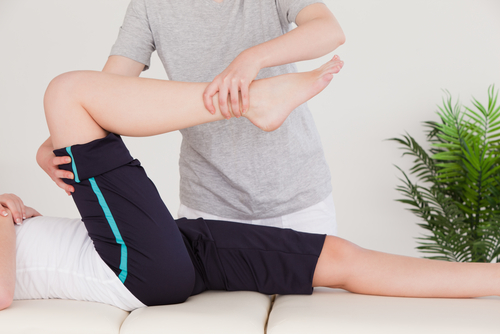What is Applied Kinesiology?
Applied Kinesiology can be divided into two distinct parts.
One is an aid to diagnosis. Muscle testing is used to help diagnose what is functioning abnormally. This can be a problem with the nervous system, lymphatic drainage, the vascular supply to a muscle or organ, a nutritional excess or deficiency, a problem with the cranial-sacral – TMJ mechanism, an imbalance in the meridian system or a host of other problems. Testing individual muscles in an accurate manner aids in determining the functional status of an individual’s physiology. The relative strength of the muscle, when combined with a knowledge of the basic mechanics and physiological functioning of the body, helps to more accurately determine a proper diagnosis.
“An intact nervous system will lead to optimum functioning of the human body.” definition of Health, Dorland’s Medical Text
 The second part of Applied Kinesiology involves the treatment phase. Dr. George Goodheart and other members of the International College of Applied Kinesiology have adapted different treatment methods to the problems that have been diagnosed. The methods employed to balance the malfunction found in the patient include: nutrition, chiropractic manipulation, osteopathic cranial techniques, acupuncture meridian techniques, myofascial techniques, nervous system coordination techniques, brain balancing techniques, and other theories in medicine that involve control of the vascular and nervous systems.
The second part of Applied Kinesiology involves the treatment phase. Dr. George Goodheart and other members of the International College of Applied Kinesiology have adapted different treatment methods to the problems that have been diagnosed. The methods employed to balance the malfunction found in the patient include: nutrition, chiropractic manipulation, osteopathic cranial techniques, acupuncture meridian techniques, myofascial techniques, nervous system coordination techniques, brain balancing techniques, and other theories in medicine that involve control of the vascular and nervous systems.
Applied Kinesiology borrows from many different disciplines and through the use of accurate, scientific muscle testing, in addition to the basic knowledge of the practitioner, helps direct the care to exactly what the patient’s needs are.
Applied Kinesiology (AK) uses the Triad of Health. That is: Chemical, Mental and Structural factors that balance the major health categories.
The Triad of Health is interactive and all sides must be evaluated for the underlying cause of a problem. A health problem on one side of the triad can affect the other sides. For example, a chemical imbalance can cause mental symptoms. AK enables the doctor to evaluate the triad’s balance and direct therapy toward the imbalanced side or sides.
AK skills are developed and approved by the International College of Applied Kinesiology Board of Standards. These skills are refined from many disciplines including Chiropractic, Osteopathy, Medicine, Dentistry, Acupuncture, Biochemistry, Psychology, Homeopathy, and Naturopathy etc. Members of these professions share knowledge through the publications and conferences of the International College of Applied Kinesiology (ICAK).
A doctor using AK during an examination will add a new dimension to standard diagnostics.
